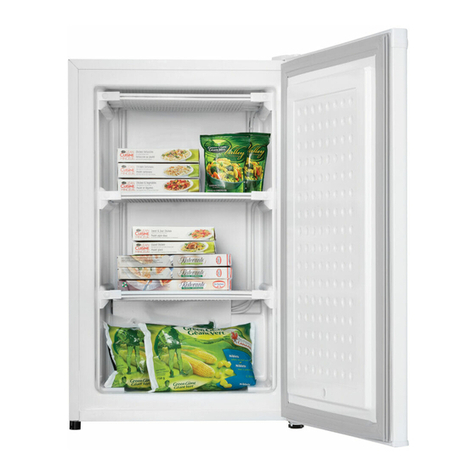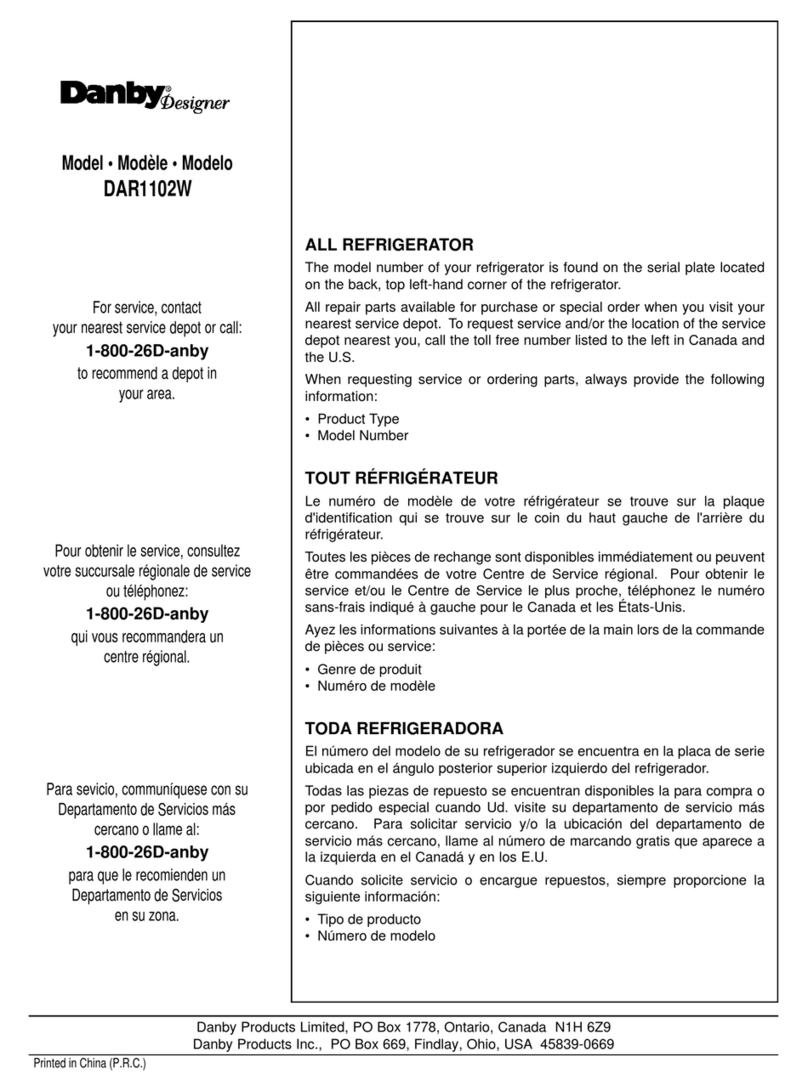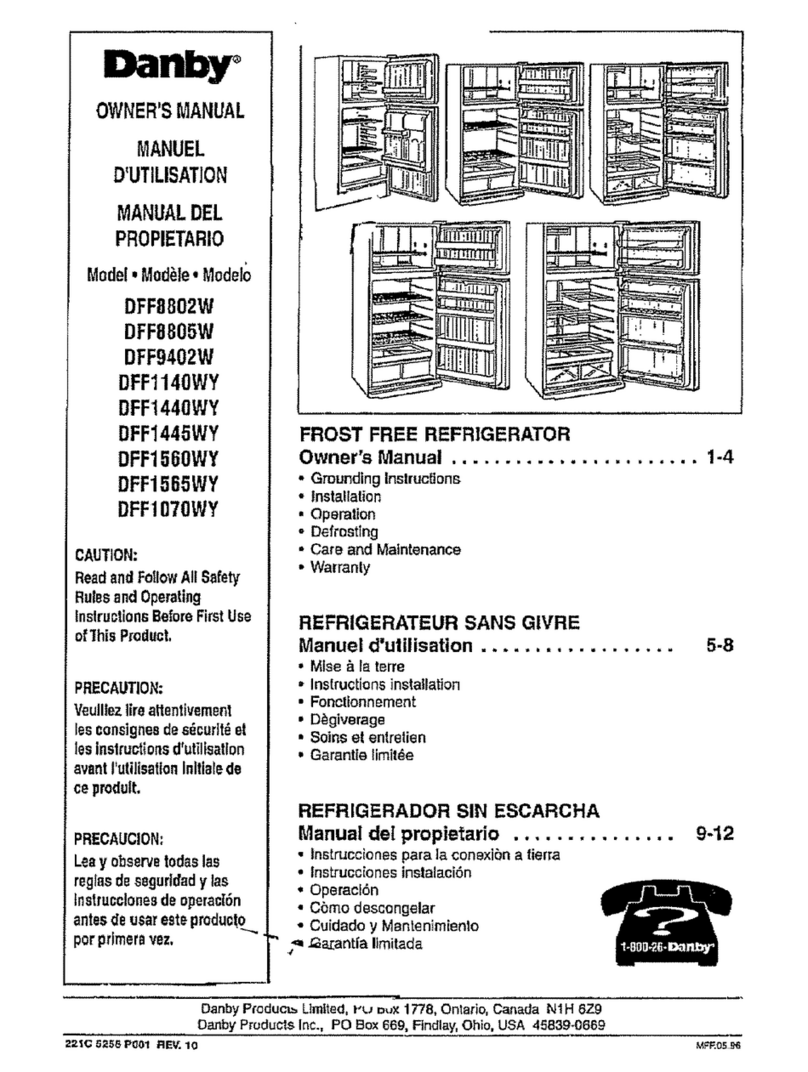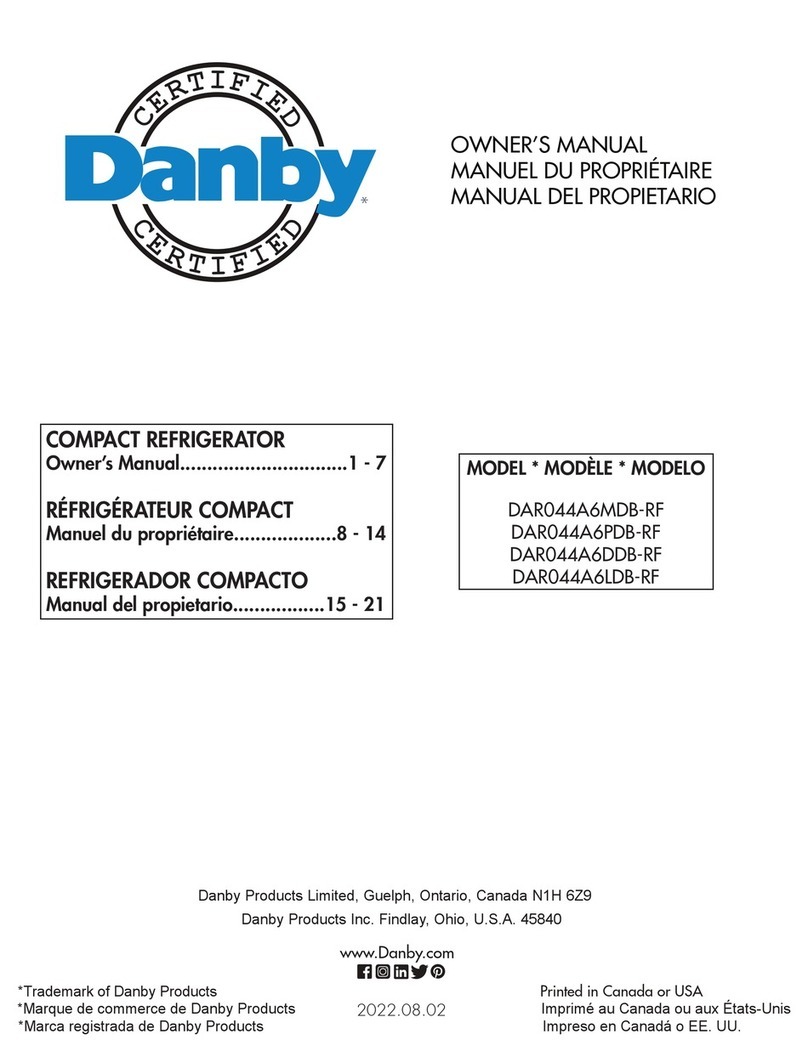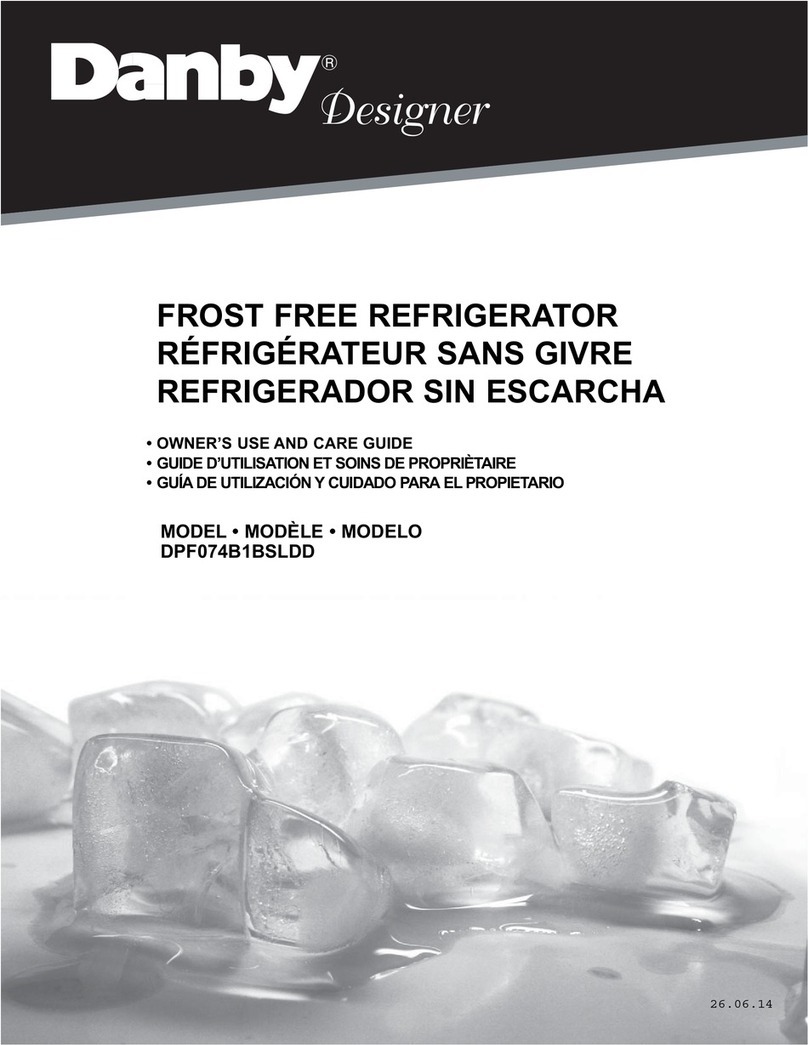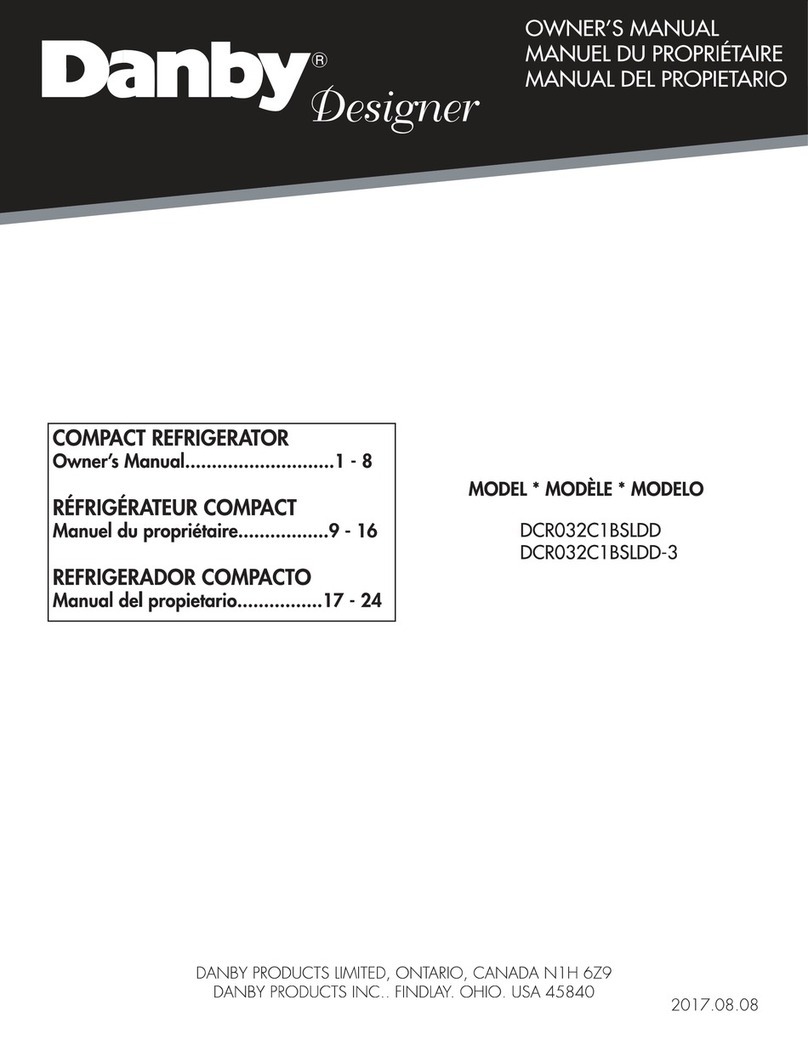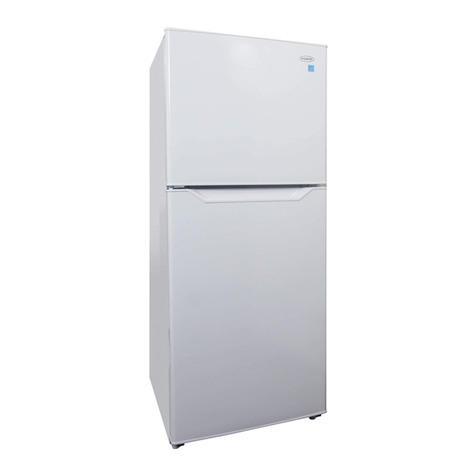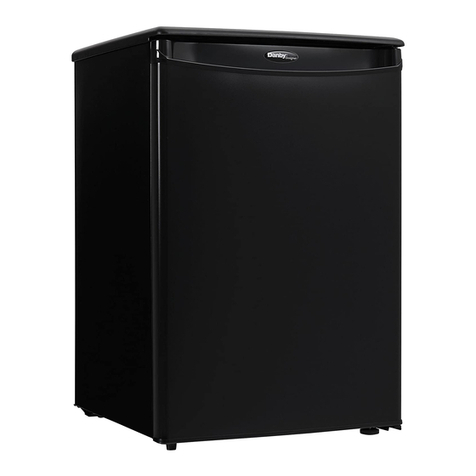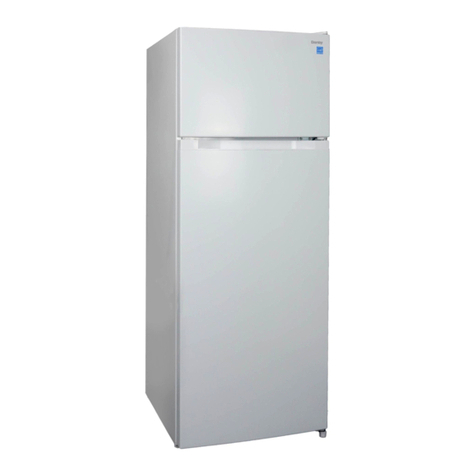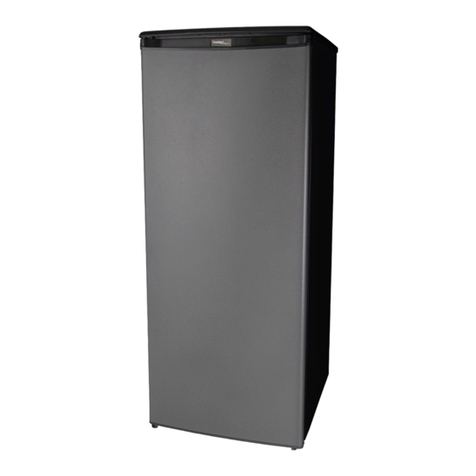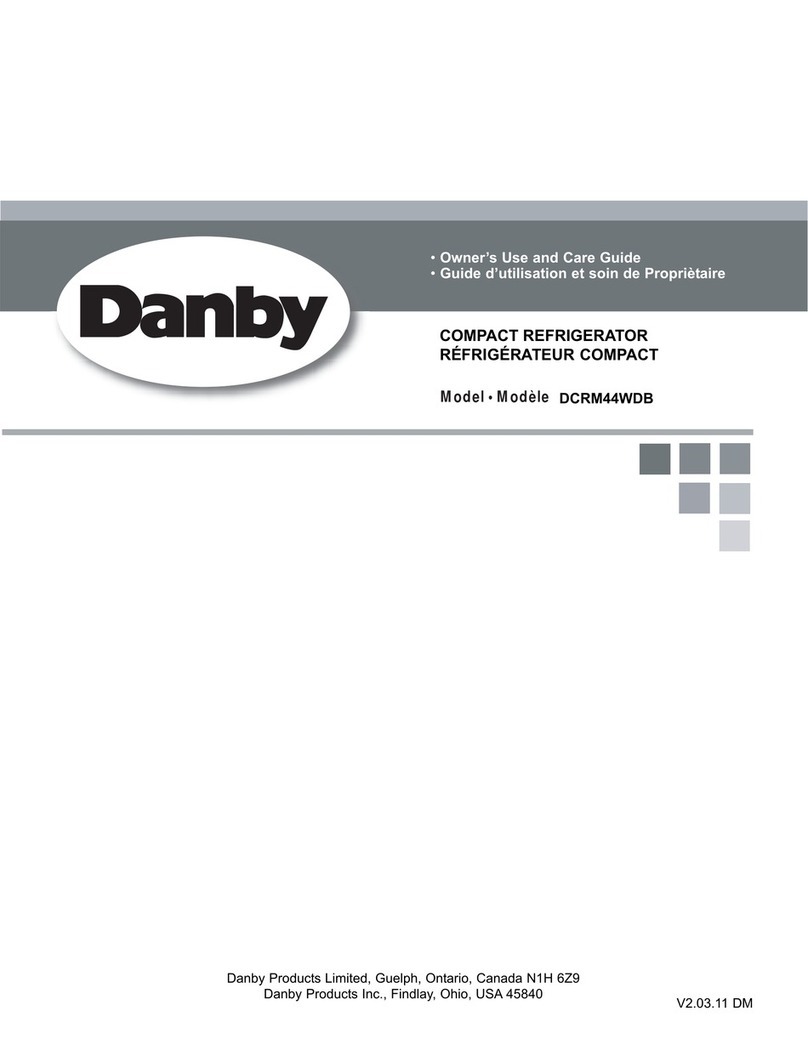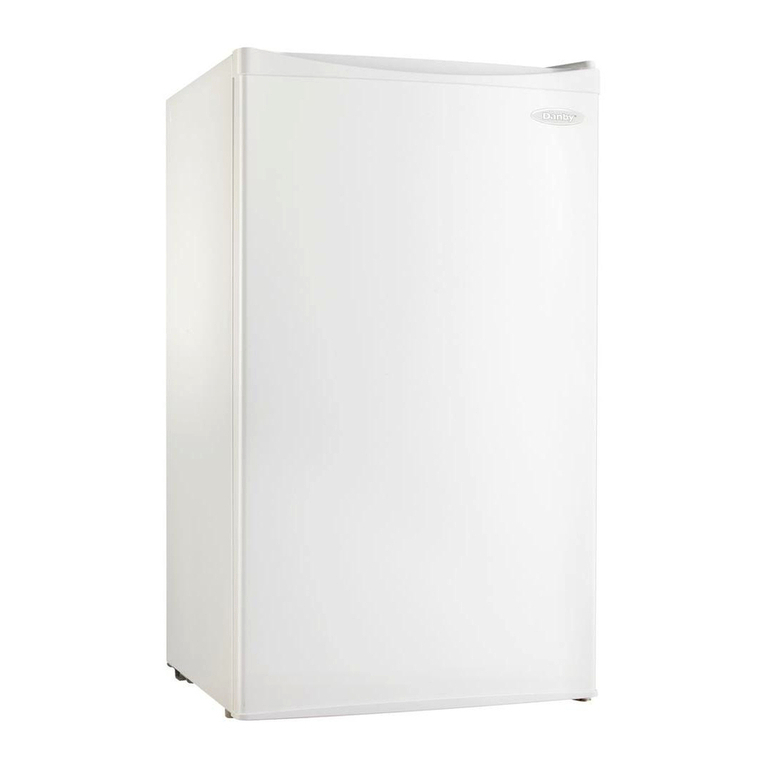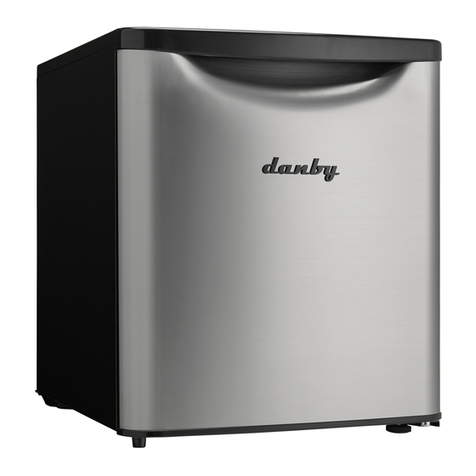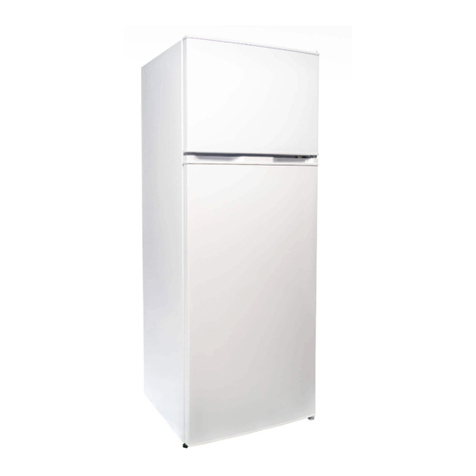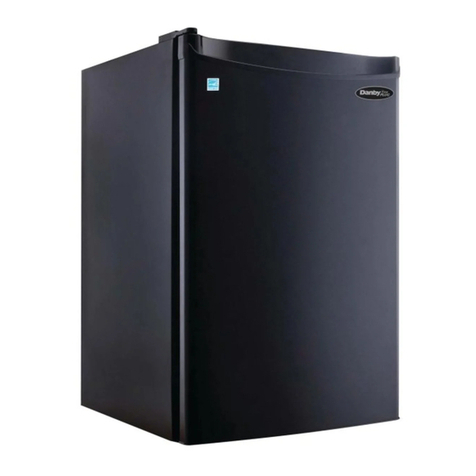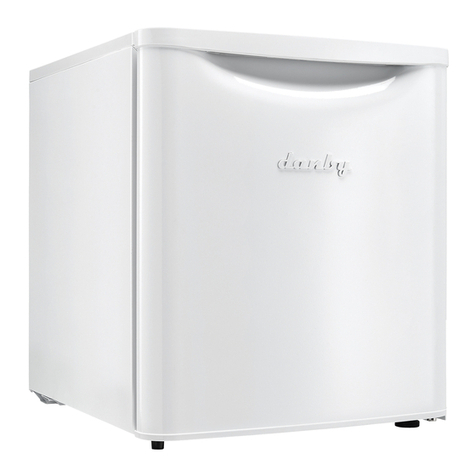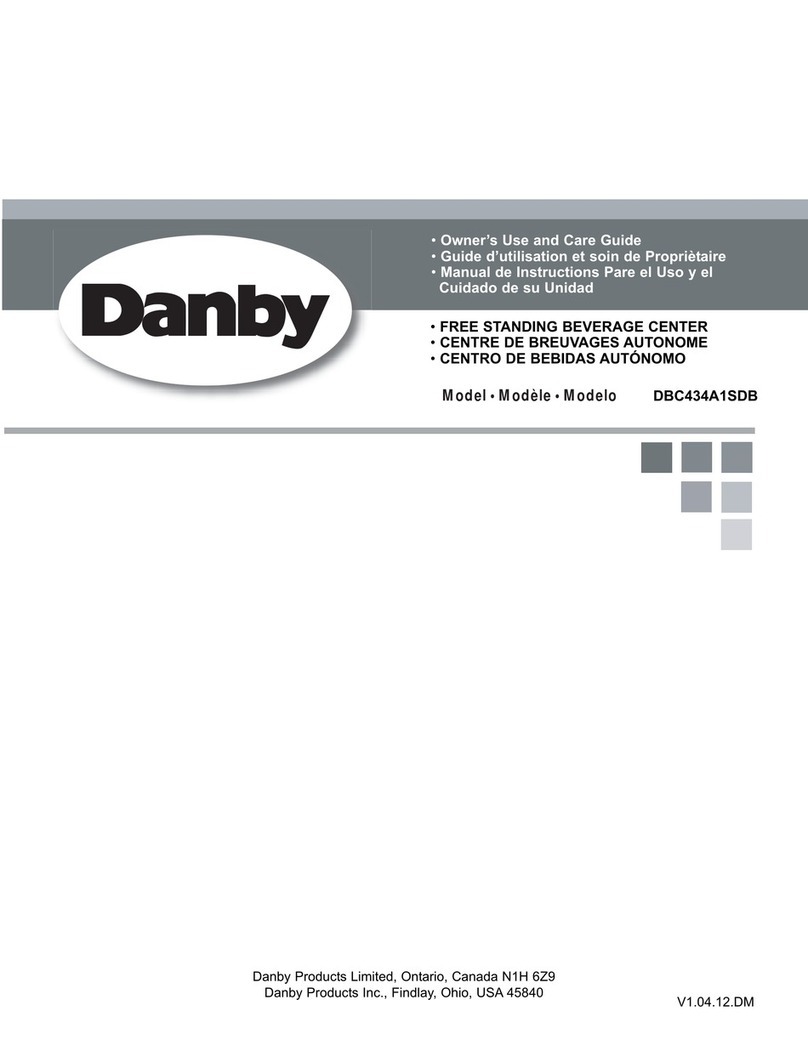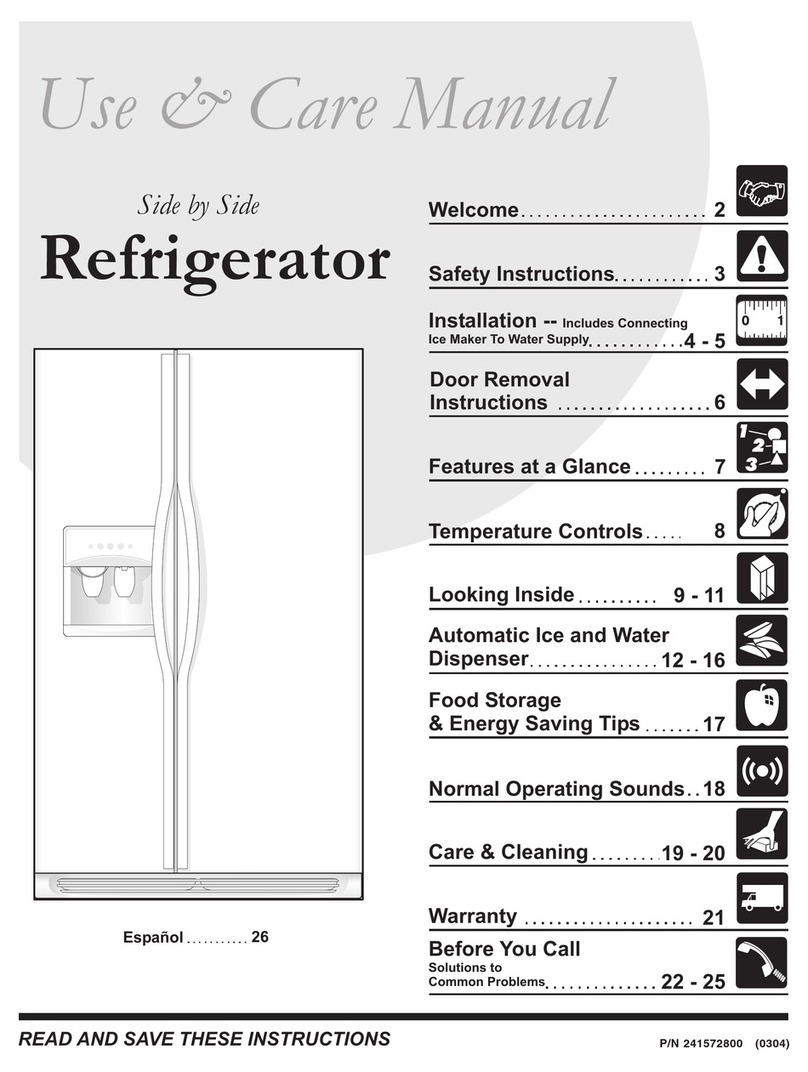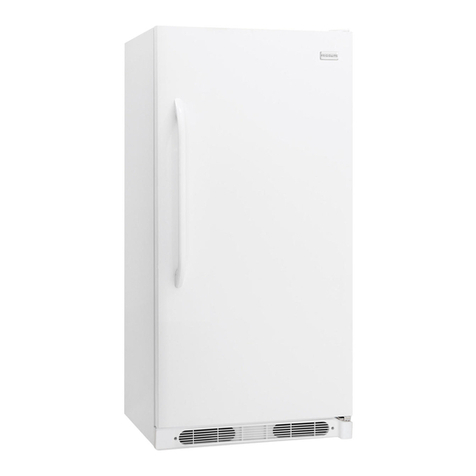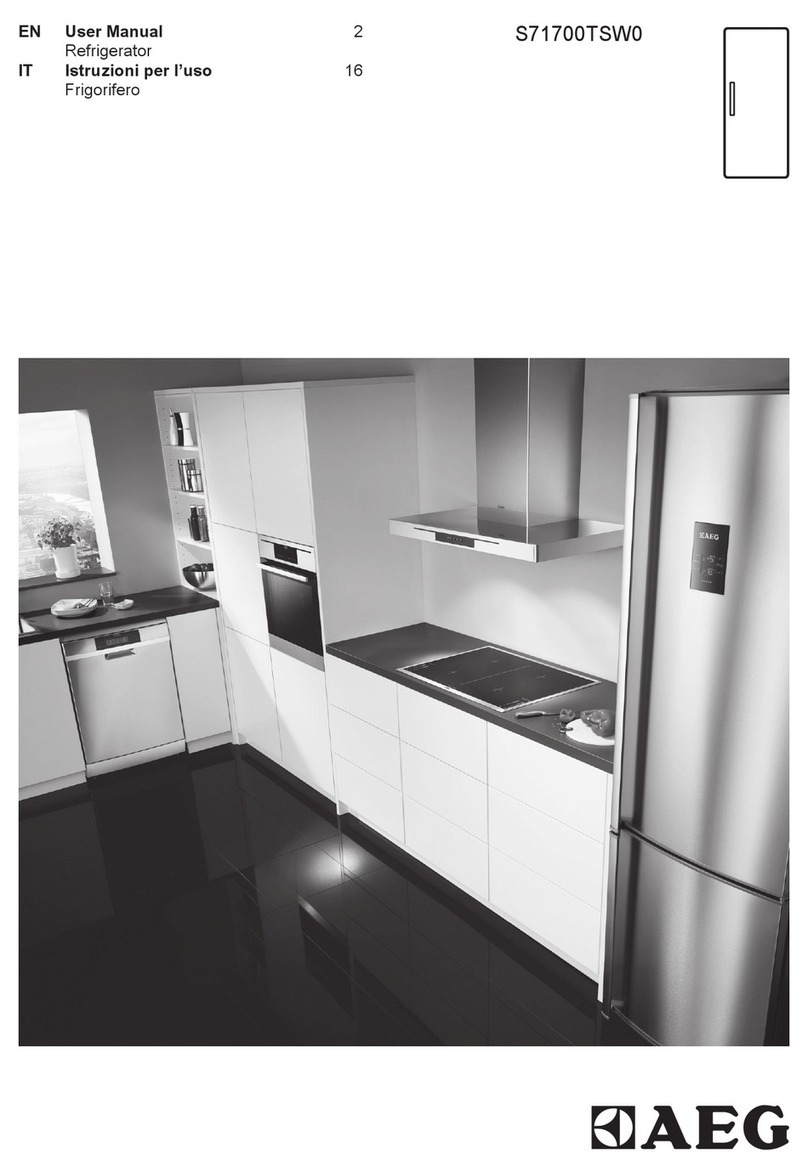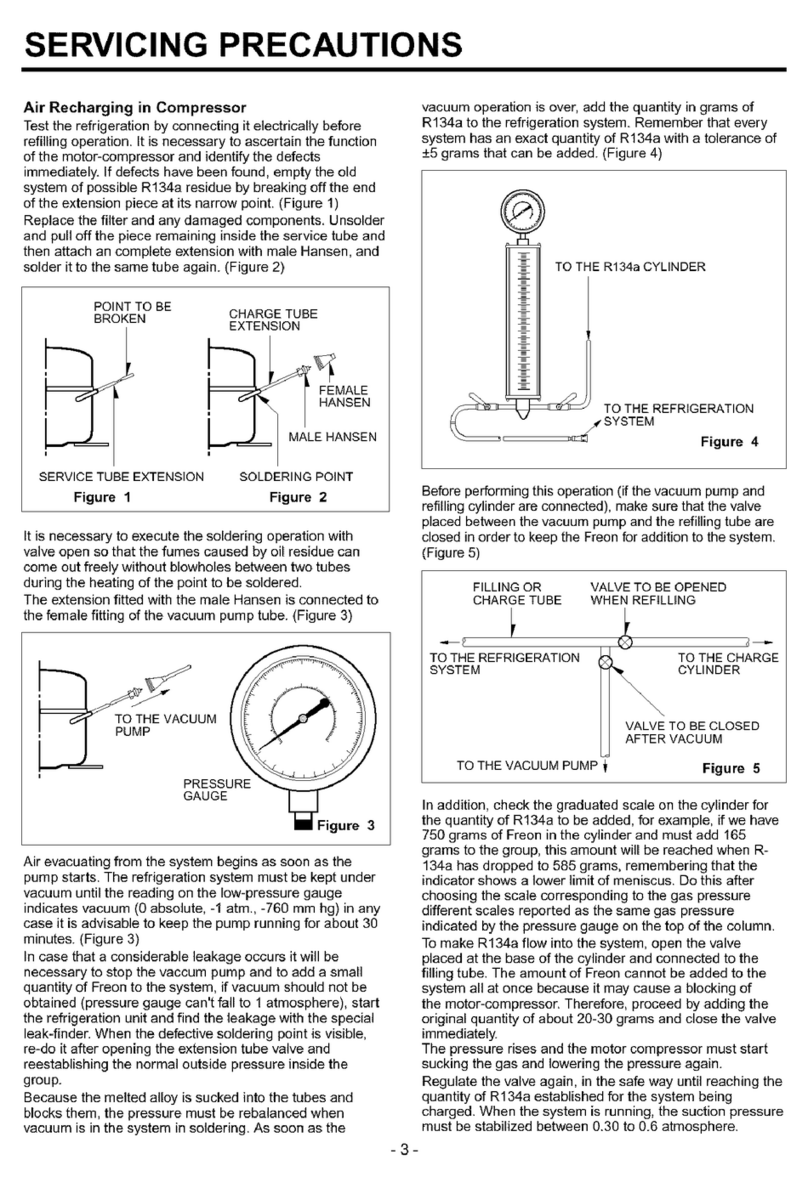
CARE AND MAINTENANCE
Cooling System ....
This refrigerator is inclusive of a Frost Free type
cooling systern, which rneans you never have to
defrost the freezer cornpartment. Defrosting is done
automatically by means of a defrost heating elernent
and a defrost tirner factory-prograrnmed to operate
(cycle) after approximately 3 hours of continuous
compressor cycling. The defrost water is routed into a
defrost pan located directly above the compressor,
where it then evaporates.
If You Move
Rernove, or securely fasten down, all loose items
inside the refrigerator. To avoid damaging the
leveling legs, turn them all the way into the base.
Some Important Rules for the Correct Use of the
Refrigerator
• Never place hot foods in the refrigerator.
• Beverages should be stored in sealed containers.
Cleaning
Before cleaning the refrigerator or freezer, always
disconnect the refrigerator frorn the power supply. To
clean the inside, use a soft cloth and a solution of a
tablespoon baking soda to one quart (4 cups) of
water, or a mild soap suds solution or mild detergent.
Wash ice cube tray, drip tray, and glide out shelves in
a mild detergent solution, then wipe dry with a soft
cloth. Clean the outside with a damp soft cloth and
some mild detergent or appliance cleaner.
Setting the Thermostat
The thermostat setting can be adjusted from
Minirnum (warmest) setting through Maximurn
(coldest) setting in both the refrigerator and freezer.
We recornmend setting the thermostat at the medium
(rniddle) setting indicated by • . However, if you
find this setting inadequate for your cooling
requirernents, adjust as needed by rotating the
therrnostat knobs. To locate the thermostat control
knobs, refer to Features on page 3.
• Foods to be stored for a long time should be
wrapped in cellophane or polyethylene, or kept in
glass containers. Never place spoiled food in the
refrigerator.
• Don't overload the refrigerator.
• Don't open the door unless necessary.
• Should the refrigerator be stored without use for
long periods, it is suggested, after careful
cleaning, to leave the door ajar to allow the air to
circulate inside the unit in order to avoid the
possible formations of condensation, mold, or
odors.
Food Storage Suggestions:
Fresh Food Compartment-
• Never cover food compartrnent shelves with
alurninum foil or any other shelf covering
material which may prevent air circulation.
For short vacation periods_ leave the control knob at
the usual setting. During longer absences;
a) remove all food.
b) disconnect from electrical outlet.
c) clean the refrigerator thoroughly, including
defrost pan.
Always remove porous store wrapping paper
frorn rneats, poultry, and fish. Meats should be
wrapped individually and placed in a dish for
storage. Wrap fish and poultry in foil or heavy
waxed paper. Most fish should be used the sarne
day of purchase. Packaged meats such as harm
bacon, dried beef, or frankfurter, store best in
their original packages.
d) leave the door open to avoid possible formations • Allow warm foods to cool to roorn ternperature
of condensation, mold, or odors, before placing them in the refrigerator.
Power Failure
Most power failures are corrected within a couple of
hours, and will not affect your refrigerator
temperatures. However, you should minimize the
number times you open the door while the power is
off. During power failures of longer duration, take
steps to protect your food, for example, by placing
dry ice on top of packages.
• Always cover open dishes of food, especially
leftovers. Use leftovers within 2 or 3 days.
Vegetable Crisper
The tray at the bottom of the refrigerator is covered
to retain moisture. The crisper compartment will
enable you to store vegetables and fruits which would
otherwise dry out rapidly. The humidity level inside
the crisper drawer can be controlled by adjusting the
"damper" control (white slider) located on the front
of the drawer.
